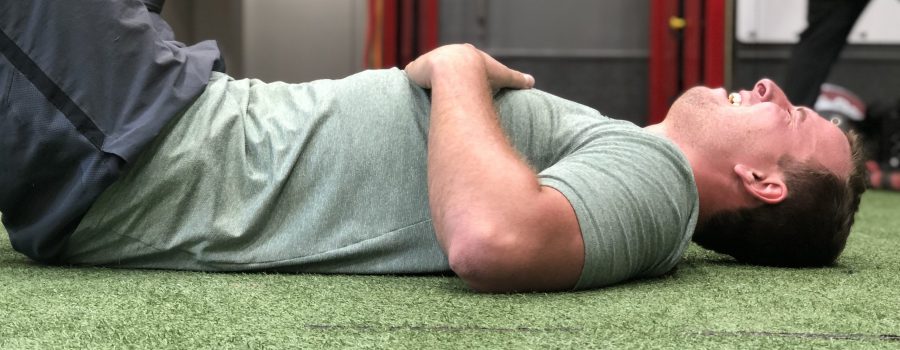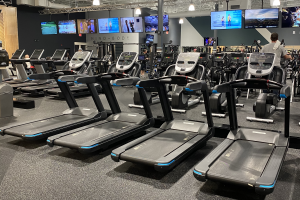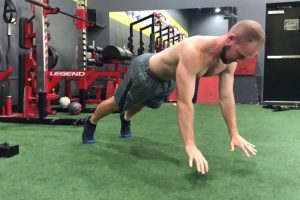High Intensity May Not Be Right For You.
High intensity is all the rage these days. I mean, what’s not to like? Twice the results in half the time? Burn calories even after you’re done exercising? Better cardio results than long distance work? The list of advantages goes on…
It even works into our cultural masochistic desire to beat our bodies up for the extra junk food we ate the other day with dripping sweat and aching muscles. I mean, who even does LSD anymore? (Long steady distance of course, not the other LSD!)
Scroll though social media, check out the workout section on Amazon Prime, or look up some at home routines on YouTube and you’ll see hundreds of variations on the same thing: jump squats, burpees, and high knees in place.
But before we get too far down this path of optimizing and minimizing our body’s exposure to movement, let’s step back to consider what we miss by relying on this type of exercise too much.
To be clear, I am not opposed to the HIIT style of exercising at all. It’s clearly effective and is an excellent option in a pinch for time. My thought here is that our bodies are incredible and complex entities that have needs outside of just adding intensity. As you think about your movement and exercise through the week, my hope is that you will broaden your perspective on what you choose to do for training.
What do you actually want from your exercise routine? As with all things, setting an intention and a plan should be the first step. So, what do you want to improve or change through your training? Strength gain? Better conditioning? Lose some weight? Improve your athletic performance? The answer to each of those will be different based off what you are looking to do.
I have people ask me all the time about “what workout should I do to lose fat”. The issue is that it doesn’t work like that. Weight loss and muscle gain are primarily determined in the kitchen based off of what you eat. YOU CANNOT OUT WORK A BAD DIET. Much of the HIIT culture is driven by people who are chasing the emotional aspect of “hard work”, sweat, and getting your heart rate to max levels. The issue is that this really isn’t going to accomplish what they want.
Look at it this way – your body responds metabolically to the energy demands it has placed on it. When you are in a calorie deficit, your body will lower the metabolism and minimize unnecessary movement. Additionally, the harder you work out, the more your body will resist that fat loss by increasing hunger signaling and absorbing more calories from the food you eat. So if you burn 500 calories from a super tough HIIT workout, but eat 200 more unintentionally from an increased ghrelin production (a hunger signaling hormone) and spend more time sitting because you’re exhausted and miss your afternoon workout, you’re likely not much better off calorically than you would have been to just do a 2-3 mile walk outside, enjoying the nice weather.
I am not saying that HIIT isn’t an effective way to burn calories, but I am saying it’s not as simple as that. Your body fights to maintain homeostasis at every turn, and a handful of sweat sessions aren’t going to change that. So, before you sign on for another round of boot camp classes, take the time to actually think about what you want. And if that means leaning out, then understand that you will only see the results you want when you make the change in your diet and eating.
Don’t confuse harder with better – Building on the last point, many people turn to HIIT training for emotional release to feel good about how hard they worked. Exercise helps to release endorphins, the natural feel good hormone in the body. And while we all love to feel good about how hard we worked, this can get a bit addictive for some people, turning them into HIIT junkies.
Again, I don’t want to diminish this as an important benefit of exercise. I absolutely love the way I feel after a hard workout too! But I do want to point out that intensity and difficulty are not the be all, end all when it comes to how good a session was. Similar to judging how effective a workout was by how sore you are, these can be shallow measures that can lead to chasing harder and more difficult work constantly.
Some of you may laugh when you read that, but it’s a real problem! Overuse injuries are predominantly caused by too much work with poor movement. Additionally, this can lead people to exclude other forms of exercise in lieu of more intense options. Strength training, longer duration cardio, and mobility work are all essential for healthy bodies. Unfortunately, these don’t always scratch the same itch as HIIT training and can get put on the back burner, leading to a higher likelihood of incomplete training and more injuries.
The fix to this is to step back and plan things out in moderation. Finding 1-3 days a week to dial up the intensity after you have planned out time for movement practice, strength training, and conditioning work that covers the spectrum of energy systems. Remember, doing 1000 burpees is difficult, but that doesn’t mean it’s beneficial
Are you ready for more intensity? This needs to be the fundamental question you ask before starting anything new. Intensity is a factor that should only be added onto an aspect of exercise after you have established a base of strength and quality form.
The quickest way to get injured is to jump into a new thing without first doing the work to prepare your body for the load and volume of work. Pushups are a great example of this. 8 out of 10 people I meet do not have the technique or strength to even do 5 perfect reps in a set. Yet this doesn’t seem to stop anyone from throwing pushups into a circuit training rotation.
Overuse injuries don’t happen from correct movement patterns done in an appropriately developed volume. Tendonitis, irritation, and inflammation in joints and muscles happen when we improperly load these tissues over and over and over again. And once that starts to happen it can take a long time to undo simply because you have to let the pain heal before you can get back to actually developing the strength to do the movement the right way.
Are you strong enough? Before you add in intensity, make sure you’re strong enough to do the individual movements in isolation! Unfortunately, strength training has a bad rap with certain people who associate it with heavy weights and hurt backs. So instead of working on strength and spending the time practicing the movement, they skip right ahead to focusing on the output. This is like getting a new car and jumping right into seeing how fast it can go before first reading the owner’s manual.
True to the name, high intensity training is highly intensive. This means that fatigue will set in. If we don’t have a solid movement base of strength and quality form to fall back on, we’ll inevitably resort to compensations. Remember, we don’t rise to the level of our hopes, we fall to the level of our training.
Strength training is skill development. You are learning how to move and how your body and muscles work together. You can’t rush this, and you can’t learn under fatigue. Doing 1000 bad pushups will not get you any closer to doing a pushup well. Once you get over the shoulder pain you’ve caused yourself, you can start practicing the right way – 1 perfect rep at a time.
The volume adds up – A big point to remember is that the mileage you put on your body does add up over time. One shortcoming of many HIIT style workouts is a small selection of movements and training modalities. You know what jump squats, burpees, jump lunges, high knees in place, and running all have in common? They are very quadricep dominant movements.
Though it’s not impossible, it’s definitely not as easy to train the posterior chain (the muscles on the back of your body – hamstrings, glutes, etc.) with only bodyweight options. And the exercises that do work those muscles don’t lend themselves to scaling up in intensity well. This asymmetrical work will easily lead to knee stiffness, tendonitis, anterior hip pain, and hamstring strains.
Though well intentioned, your neighborhood fitness guru or favorite YouTube workout can easily walk you right into irritated joints after a few workouts. Again, I’m not saying to avoid these all together! I just want you to consider how your workouts line up with the rest of your movements through the week.
If you’re missing a lot of hamstring and glute training or have pain, then take a step back to see what you can do incorporate those movements! This is no different than adding in a salad to get some spinach if you aren’t getting many vegetables into your diet! You don’t have to change the whole thing, just work to balance out the overall nutrition.
Make sure HIIT training is part of a “Well-Balanced Breakfast” – As they always say at the end of some sugary kids’ cereal commercial, “Cereal X is part of a healthy, well rounded breakfast!”. Well, of course Reese’s Puffs aren’t part of a healthy breakfast, but if you get all of your nutrients from other foods with calories left over, you can squeeze a few bites in… Or something like that.
Ok, ok, pardon my lame analogy. Obviously, Reese’s Puffs are WAY better than HIIT training, but the point remains the same – take time to incorporate the full spectrum of movement and exercise needs into your training each week, not just the fast and fun stuff!
This means you want to make time for an intentional warmup, some form of skill work or sport training when applicable, dedicated strength training, core work, mobility, and conditioning that lasts more than 20 minutes. Each of these are equally important and play a valuable role in keeping your body functioning well. So don’t skip them!
–
To wrap this up, I want to underscore this once more – I support high intensity interval training!!! It’s effective, it’s important, and it can be fun! The goal of this article is to help you put things into perspective – HIIT work is just one part of a well-rounded training routine.
We are all too easily lured into the promise of a fast and furious solution to try and fix our problems. Hence why diet pills, surgeries, and stomach wraps are all things that people spend A LOT of money on. HIIT workouts are great, but the whole 15-minute workout that takes care of everything you need and sounds too good to be true, well, it is too good to be true.




